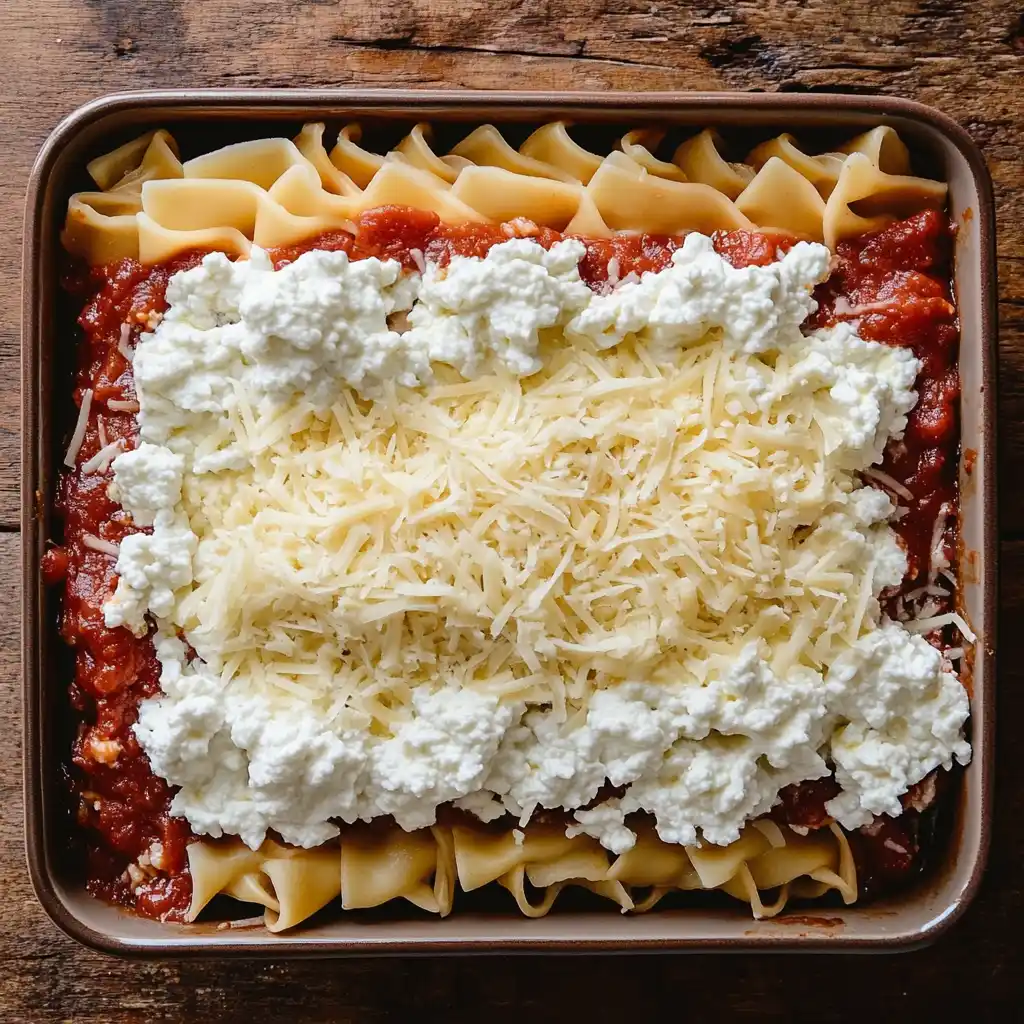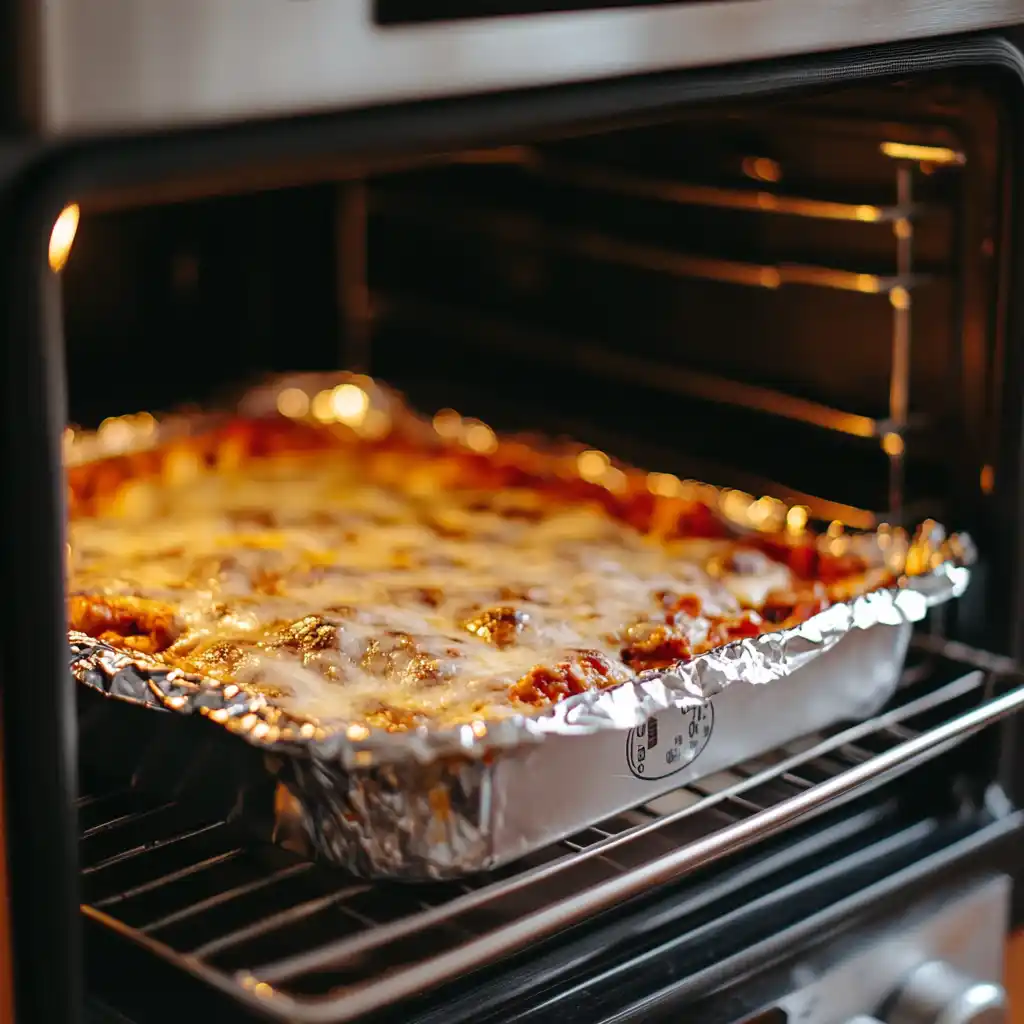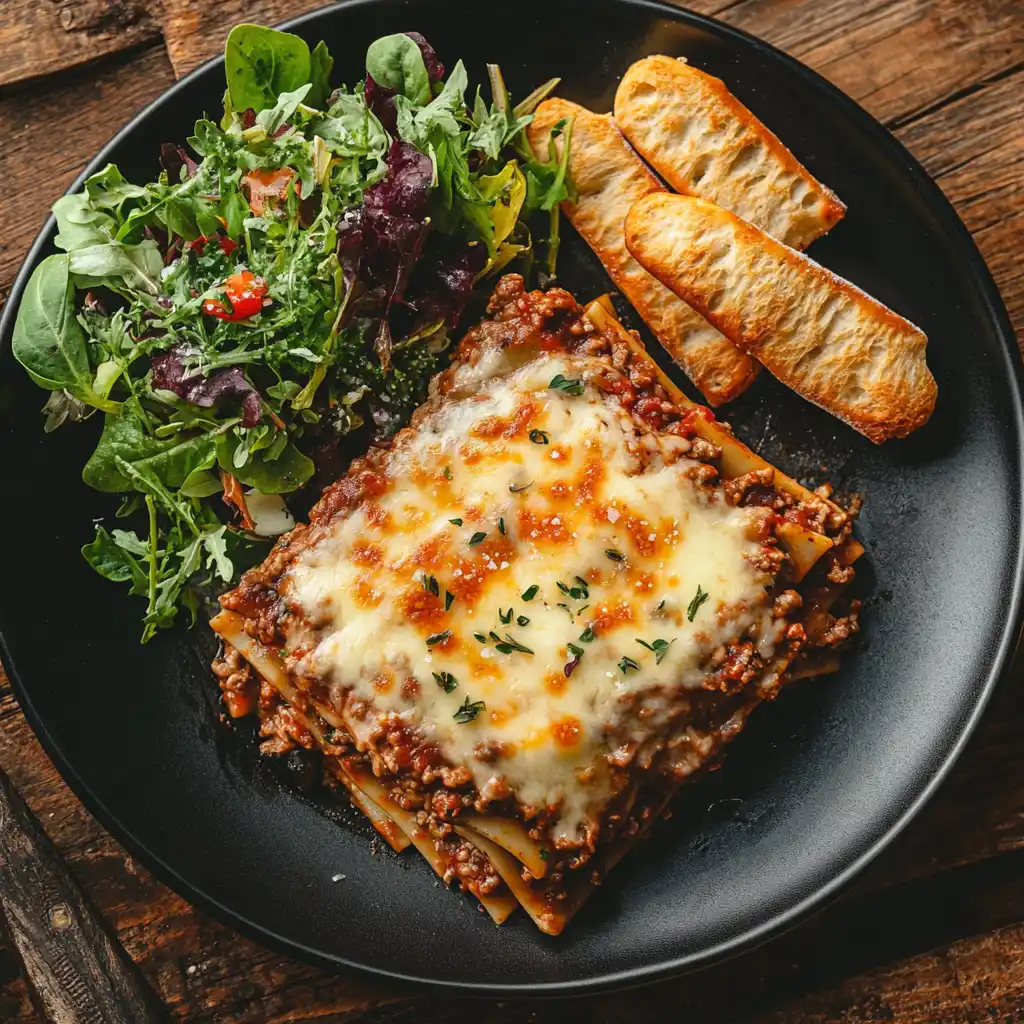Do I Need to Boil Oven-Ready Lasagna Noodles Before Baking? Oven-ready lasagna noodles, also known as no-boil lasagna noodles, have revolutionized how we prepare this classic Italian dish. These pre-cooked sheets of pasta eliminate the need for boiling, saving time and effort without compromising the final result.
If you’re wondering whether you need to boil oven-ready lasagna noodles before assembling your dish, the short answer is no boiling is unnecessary. In this article, we’ll explain why boiling isn’t required, how to use these noodles properly, and tips for achieving perfect results every time.
What Are Oven-Ready Lasagna Noodles?
Oven-ready lasagna noodles are a convenient alternative to traditional lasagna noodles. Unlike standard pasta sheets, which require boiling before use, oven-ready noodles are pre-cooked during manufacturing and then dehydrated. This allows them to cook and soften as they absorb moisture during the baking process.
How Are They Different from Traditional Lasagna Noodles?
- Preparation:
- Traditional noodles need to be boiled and drained before layering, while oven-ready noodles can go straight into the dish.
- Texture:
- Oven-ready noodles are slightly thinner than regular noodles to allow for quicker hydration and even cooking.
- Baking Requirements:
- These noodles rely on liquid from the sauce and other ingredients to rehydrate, making them a great choice for saucy lasagna recipes.https://www.barilla.com/
Why Choose Oven-Ready Noodles?
- Time-Saving:
- Skip the boiling step and reduce prep time significantly.
- Mess-Free:
- No need for extra pots or strainers, simplifying the cleanup process.
- Consistent Cooking:
- When layered with enough sauce, oven-ready noodles cook evenly and blend seamlessly into the lasagna.
Oven-ready lasagna noodles simplify the process of making this classic dish, making them ideal for busy cooks or those new to lasagna-making.
No, Boiling Is Not Necessary
Oven-ready lasagna noodles are specifically designed to be used without boiling. These noodles soften and cook perfectly as they absorb moisture from the sauce and other ingredients during baking. Skipping the boiling step not only saves time but also reduces the risk of overcooking or tearing the noodles.
How Do They Work? ” Do I Need to Boil Oven-Ready Lasagna Noodles “

- Pre-Cooked and Dehydrated:
- Oven-ready noodles are partially cooked during production and then dried, making them shelf-stable.
- Rehydration During Baking:
- These noodles rehydrate and cook as they absorb liquid from the surrounding sauce.
- Sufficient sauce is essential to ensure the noodles become tender.
- Even Cooking:
- Proper layering and baking allow the noodles to cook evenly without boiling beforehand.
Can You Boil Oven-Ready Noodles If You Want To?
- Possible, But Not Recommended:
- Boiling oven-ready noodles can make them too soft or cause them to fall apart during assembly.
- If you prefer slightly softer noodles, briefly soak them in warm water for 5–10 minutes instead of boiling.
- When It Might Be Useful:
- If your recipe is low on sauce or uses drier ingredients, pre-soaking the noodles can help them soften more evenly.
Boiling oven-ready lasagna noodles is unnecessary for most recipes, making these noodles a hassle-free solution for creating delicious lasagna.
Step-by-Step Guide to Using Oven-Ready Lasagna Noodles
Follow these simple steps to create a perfect lasagna using oven-ready noodles. Proper layering and sufficient moisture are key to achieving tender, flavorful noodles.
Step1: Prepare Your Ingredients
- Choose a Sauce:
- Use a sauce with enough liquid, such as marinara, béchamel, or meat sauce. Ensure you have at least 4–5 cups of sauce for a standard 9×13-inch lasagna.
- Prepare Fillings:
- Grate cheese, cook ground meat, or sauté vegetables as needed.
- Preheat Your Oven:
- Most lasagna recipes bake at 375°F (190°C).
Step2: Assemble the Lasagna
- Start with Sauce:
- Spread 1 cup of sauce evenly over the bottom of your baking dish to prevent the noodles from sticking.
- Add Noodles:
- Lay oven-ready lasagna noodles side by side, slightly overlapping if necessary.
- Layer Fillings:
- Add a layer of ricotta cheese, mozzarella, Parmesan, or your chosen fillings over the noodles.
- Repeat Layers:
- Continue layering sauce, noodles, and fillings until all ingredients are used. End with a layer of sauce and shredded cheese on top.
Step3: Add Liquid If Necessary
- For Extra Assurance:
- Pour ½ to 1 cup of water or broth around the edges of the dish if your sauce is thick. This helps ensure the noodles hydrate fully.
Step4: Bake the Lasagna
- Cover and Bake:
- Cover the lasagna with aluminum foil and bake for 25–30 minutes. The foil traps steam, allowing the noodles to cook evenly.
- Uncover and Finish Baking:
- Remove the foil and bake for an additional 10–15 minutes until the cheese on top is melted and bubbly.
Step5: Let It Rest
- Set the Layers:
- Allow the lasagna to rest for 10–15 minutes before slicing to help the layers set and make serving easier.
Using oven-ready lasagna noodles is straightforward and eliminates the need for pre-boiling.
Secrets to Perfectly Tender Oven-Ready Noodles
To ensure your oven-ready lasagna noodles are soft, flavorful, and fully cooked, follow these expert tips.
Use Plenty of Sauce
- Why It Matters:
- Oven-ready noodles absorb liquid during baking, so a generous amount of sauce is essential to keep them moist.
- How Much Sauce to Use:
- Aim for at least 4–5 cups of sauce for a standard 9×13-inch lasagna.
- Make sure each layer is fully coated, especially the top and edges.
Avoid Dry Ingredients
- Cook Fillings Ahead:
- Sauté vegetables like spinach or zucchini to remove excess moisture, which can make the lasagna watery.
- Fully cook meats like ground beef or sausage for the best flavor and texture.
- Add Creamy Elements:
- Use ricotta, béchamel, or mascarpone cheese to add creaminess and help keep the layers moist.
Cover While Baking
- Trap Steam:
- Cover the dish with aluminum foil during the first portion of baking to allow the noodles to steam and soften evenly.
- Prevent Cheese from Sticking:
- Spray the underside of the foil with cooking spray or use parchment paper to prevent sticking.
Add Extra Liquid for Thick Sauces
- Thin It Out:
- If using a thick, chunky sauce, add ½ to 1 cup of water or broth around the edges of the lasagna to ensure the noodles hydrate properly.
- Even Distribution:
- Spread the liquid evenly over the noodles before adding the next layer.
Let It Rest Before Serving
- Why Resting Is Important:
- Resting allows the noodles to absorb any remaining liquid and helps the layers set, making it easier to slice and serve.
- Recommended Rest Time:
- Let the lasagna sit for 10–15 minutes after baking.
These tips will ensure your oven-ready lasagna noodles are tender, flavorful, and perfectly incorporated into your dish.
Secrets to Perfectly Tender Oven-Ready Noodles
To ensure your oven-ready lasagna noodles are soft, flavorful, and fully cooked, follow these expert tips.
Use Plenty of Sauce
- Why It Matters:
- Oven-ready noodles absorb liquid during baking, so a generous amount of sauce is essential to keep them moist.
- How Much Sauce to Use:
- Aim for at least 4–5 cups of sauce for a standard 9×13-inch lasagna.
- Make sure each layer is fully coated, especially the top and edges.
Avoid Dry Ingredients
- Cook Fillings Ahead:
- Sauté vegetables like spinach or zucchini to remove excess moisture, which can make the lasagna watery.
- Fully cook meats like ground beef or sausage for the best flavor and texture.
- Add Creamy Elements:
- Use ricotta, béchamel, or mascarpone cheese to add creaminess and help keep the layers moist.
Cover While Baking
- Trap Steam:
- Cover the dish with aluminum foil during the first portion of baking to allow the noodles to steam and soften evenly.
- Prevent Cheese from Sticking:
- Spray the underside of the foil with cooking spray or use parchment paper to prevent sticking.
Add Extra Liquid for Thick Sauces
- Thin It Out:
- If using a thick, chunky sauce, add ½ to 1 cup of water or broth around the edges of the lasagna to ensure the noodles hydrate properly.
- Even Distribution:
- Spread the liquid evenly over the noodles before adding the next layer.
Let It Rest Before Serving
- Why Resting Is Important:
- Resting allows the noodles to absorb any remaining liquid and helps the layers set, making it easier to slice and serve.
- Recommended Rest Time:
- Let the lasagna sit for 10–15 minutes after baking.
These tips will ensure your oven-ready lasagna noodles are tender, flavorful, and perfectly incorporated into your dish.
Mistakes to Avoid When Using Oven-Ready Lasagna Noodles
Avoid these common pitfalls to ensure your lasagna turns out perfectly every time.
Using Too Little Sauce
- Why It’s a Problem:
- Oven-ready noodles need plenty of moisture to soften. Without enough sauce, the noodles may remain tough or chewy.
- How to Fix It:
- Always use at least 4–5 cups of sauce for a 9×13-inch lasagna. Make sure every noodle layer is fully covered.
Skipping the Foil Cover
- Why It’s a Problem:
- Baking uncovered from the start can cause the noodles to dry out or cook unevenly.
- How to Fix It:
- Cover the lasagna with foil during the first part of baking to trap steam. Remove the foil in the final 10–15 minutes for a bubbly, golden top.
Overbaking

- Why It’s a Problem:
- Overbaking can make the noodles mushy and dry out the dish.
- How to Fix It:
- Stick to the recommended baking time of 35–45 minutes at 375°F (190°C). Use a timer and check for doneness.
Using a Dry Filling
- Why It’s a Problem:
- Dry fillings like unseasoned vegetables or insufficient cheese layers can prevent the noodles from absorbing enough moisture.
- How to Fix It:
- Pre-cook and season fillings like spinach or zucchini. Add creamy cheese mixtures like ricotta or béchamel for balance.
Not Adding Extra Liquid
- Why It’s a Problem:
- Thick sauces or dense fillings may not provide enough moisture for the noodles to cook properly.
- How to Fix It:
- Add ½ to 1 cup of water or broth to the edges of the baking dish, especially when using thick, chunky sauces.
Cutting Too Soon
- Why It’s a Problem:
- Cutting lasagna immediately after baking can cause the layers to fall apart, and the noodles may not be fully set.
- How to Fix It:
- Allow the lasagna to rest for 10–15 minutes before slicing.
Avoiding these mistakes ensures that your oven-ready lasagna noodles are perfectly tender and your dish turns out delicious.
FAQs About Oven-Ready Lasagna Noodles
Heading 3: 1. Do I need to boil oven-ready lasagna noodles before baking?
No, boiling oven-ready lasagna noodles is unnecessary. These noodles are pre-cooked and designed to soften and cook as they absorb moisture from the sauce during baking.
2. Can I soak oven-ready noodles instead of boiling them?

Yes, soaking oven-ready noodles in warm water for 5–10 minutes can help them hydrate slightly before baking. This step is optional and may be useful if your recipe has less sauce or drier ingredients.
3. How much sauce should I use with oven-ready noodles?
Aim for at least 4–5 cups of sauce for a standard 9×13-inch lasagna. Each noodle layer should be fully covered with sauce to ensure even cooking.
4. Can I substitute oven-ready noodles for traditional lasagna noodles?
Yes, you can use oven-ready noodles in recipes that call for traditional lasagna noodles. Adjust by adding extra sauce or liquid to ensure the noodles cook properly during baking.
5. How do I prevent oven-ready noodles from being dry?
To avoid dryness:
- Use plenty of sauce and creamy fillings.
- Cover the dish with foil during the first part of baking.
- Add a little water or broth to the edges of the baking dish if using a thick sauce.
6. Can I freeze lasagna made with oven-ready noodles?
Yes, you can freeze lasagna assembled with oven-ready noodles, whether it’s baked or unbaked. When baking from frozen, increase the cooking time by 10–15 minutes and keep the dish covered to retain moisture.
Conclusion
Oven-ready lasagna noodles make lasagna preparation faster and easier by eliminating the need for boiling. By following the tips and techniques outlined in this guide, you can create a lasagna that’s tender, flavorful, and perfectly cooked every time.https://royalesrecipes.com/barilla-lasagna-recipe/
Remember, the key to success lies in using plenty of sauce, covering the dish during baking, and allowing the lasagna to rest before slicing. With oven-ready noodles, you’ll enjoy a hassle-free lasagna experience that doesn’t compromise on taste or texture.

